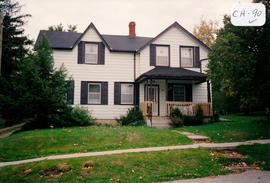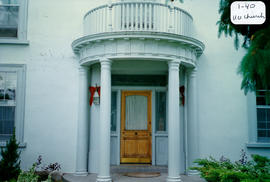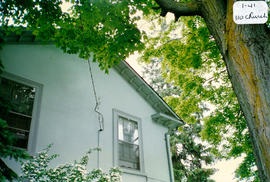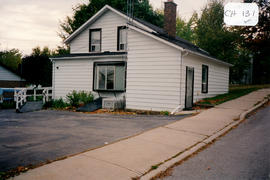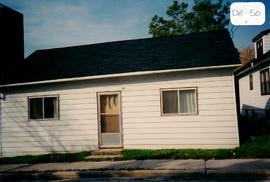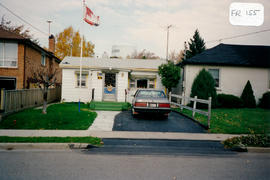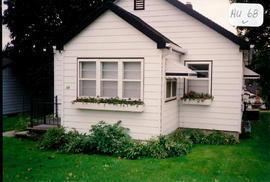- CA BWGPL GJ-HB-2017-03-18-02
- Unidad documental simple
- 1995
Parte deGeorge Jackson fonds
The mid-block building located at 90 Church St. was built pre-1900 in the Gothic Revival style. The 1½-storey, five-bay ‘farmhouse’ has a modified ‘L’-shaped plan with an off-centre hall, an asymmetrical façade, and a medium-pitched, gable roof. The open, covered porch with a hip roof is raised above grade. It is a replacement. The house originally had a full-width verandah supported by wooden posts. The upper-floor windows are offset from the ground-floor windows. There are small window openings with low floor to ceiling heights and plain, wood trim and sills. The double-hung windows and shutters are not original. The house has wood frame construction, vinyl siding, and a parged, stone foundation. Originally, the cladding was probably wood cove siding. According to the 2000 inventory, few remaining features are original other than the somewhat atypical form. It appears (by its size) that the portion of the house where the entrance is located is original and that the side wing was added later. That could explain the slight setback in the façade wall where the two join. It also notes that this modest house probably had few decorative details originally. (1, 3)
Sin título

